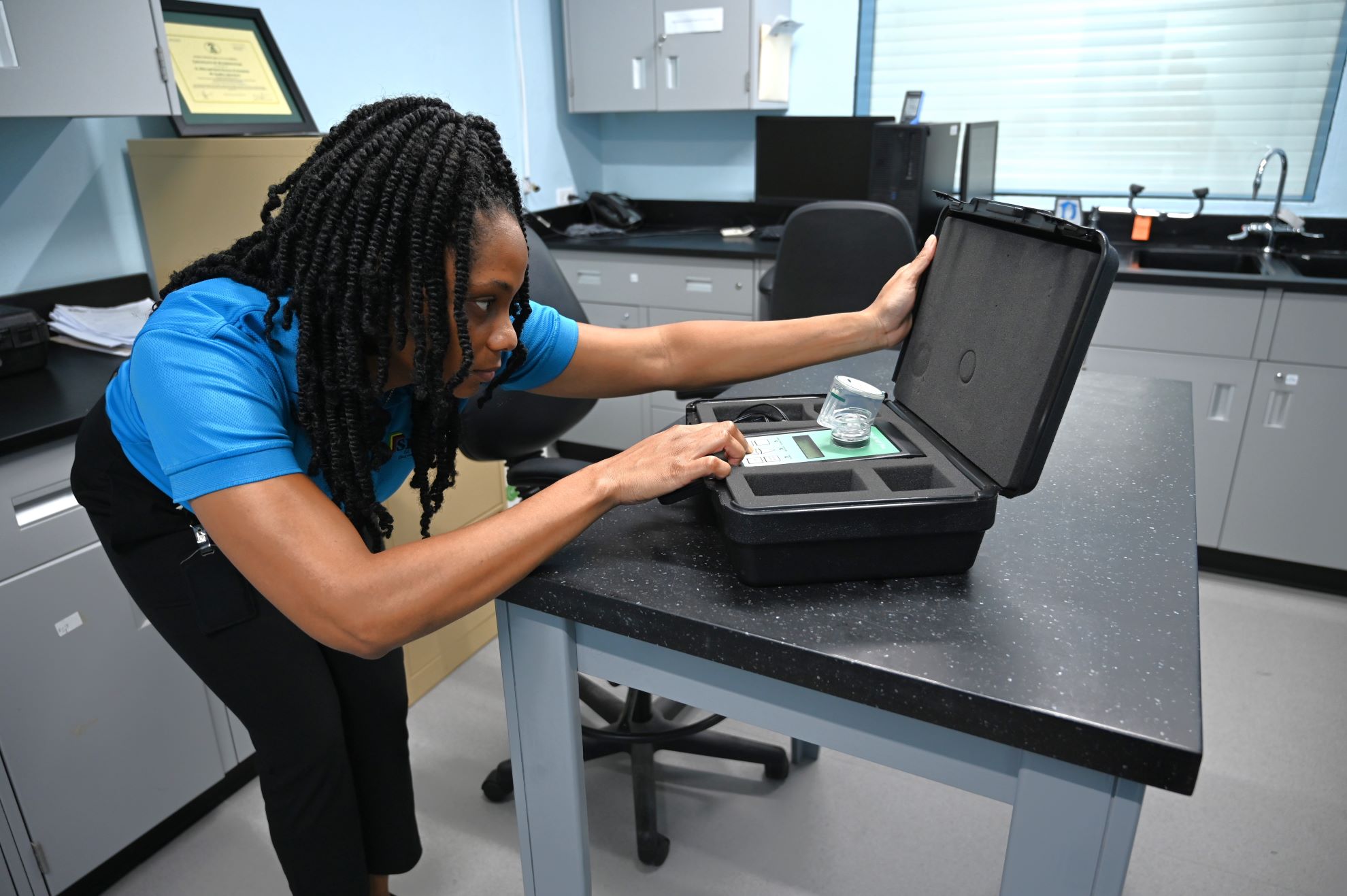
Air Quality Department
This arm of the Bureau specializes in indoor air quality (IAQ). The aim of the department is to ensure the air of an occupied space meets the necessary IAQ guidelines for occupancy, where human health is not threatened or can be adversely affected.
ISO 17025 Accredited Laboratory
ISO 17025 Benefits
ISO 17025 is an internationally recognized standard that outlines the general requirements for the competence of testing and calibration laboratories. Accreditation to this standard demonstrates that a laboratory meets a set of criteria for technical competence, management system, and quality assurance, and provides many benefits to laboratories, including:
Improved Credibility and Recognition: Accreditation to ISO 17025 enhances the reputation and credibility of a laboratory, as it demonstrates that it has met a recognized international standard. This can help the laboratory to gain recognition from customers, regulatory bodies, and other stakeholders.
Improved Quality of Results: ISO 17025 accreditation requires that laboratories have a quality management system in place, which includes procedures for managing the quality of testing and calibration activities. This leads to improved accuracy, reliability, and consistency of results.
International Acceptance: ISO 17025 accreditation is recognized globally and accepted by developed countries. Laboratories accredited to this standard can demonstrate their competence to clients and customers across the world.
Improved Efficiency and Effectiveness: Accreditation to ISO 17025 requires laboratories to have documented procedures in place for all aspects of their work. This helps to improve the efficiency and effectiveness of laboratory operations, reducing the risk of errors and improving productivity.
Competitive Advantage: Accreditation to ISO 17025 provides a competitive advantage to laboratories by demonstrating their technical competence and commitment to quality. This can lead to increased business opportunities and improved customer satisfaction.
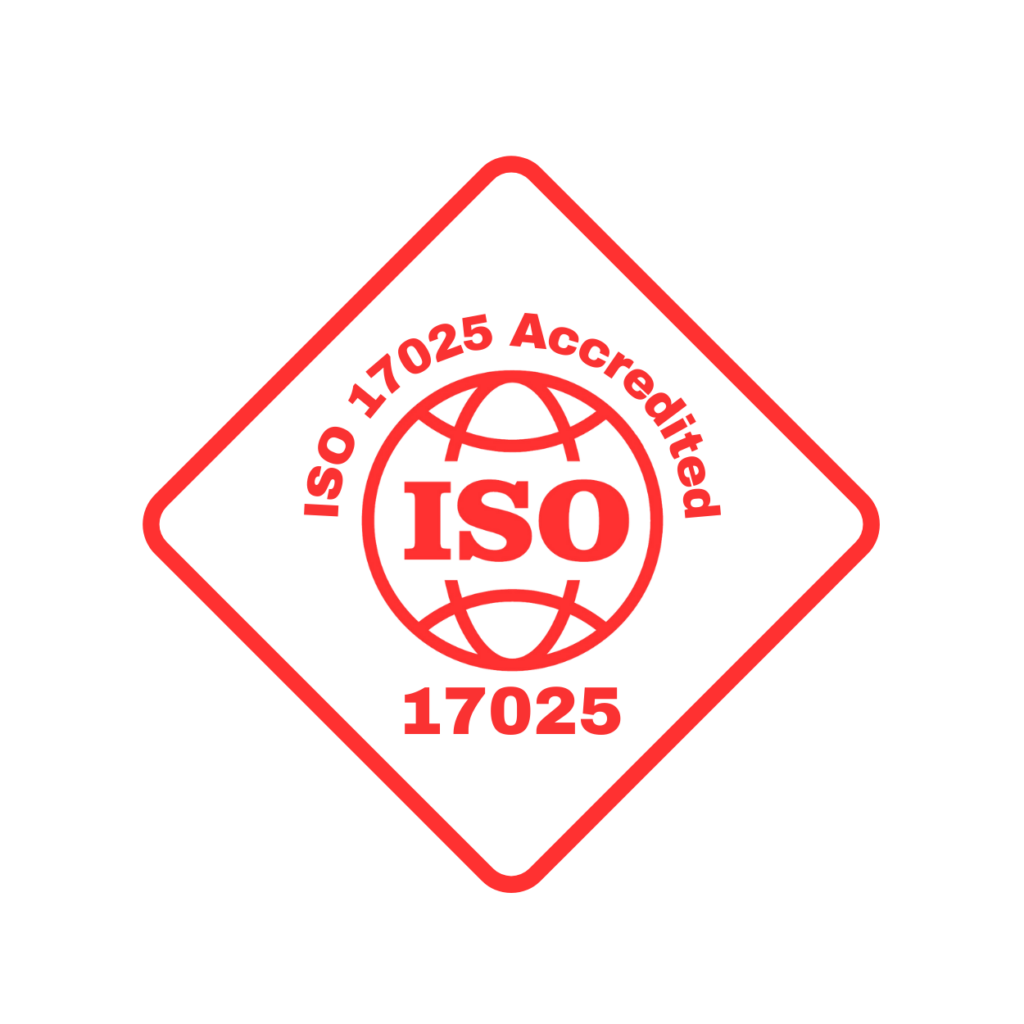
Services
The services offered by the department can be performed in any indoor space, for example, office buildings and residential areas.
Current services offered by the Air Quality Department for IAQ monitoring are:
- Mold: such as Aspergillus, Fusarium, Cladosporium, Chaetomium, Stachybotrys, Bipolaris, etc)
- Gases: oxygen (O2), carbon monoxide, carbon dioxide, sulfur dioxide, nitrogen dioxide, nitric oxide, hydrogen sulfide, ammonia, and total volatile organic compounds (TVOC).
- Particulate matter: PM2.5 and PM10 In the future, the department seeks to expand the services offered to outdoor air quality monitoring.
*Future Goals: to expand the services offered to outdoor air quality monitoring.
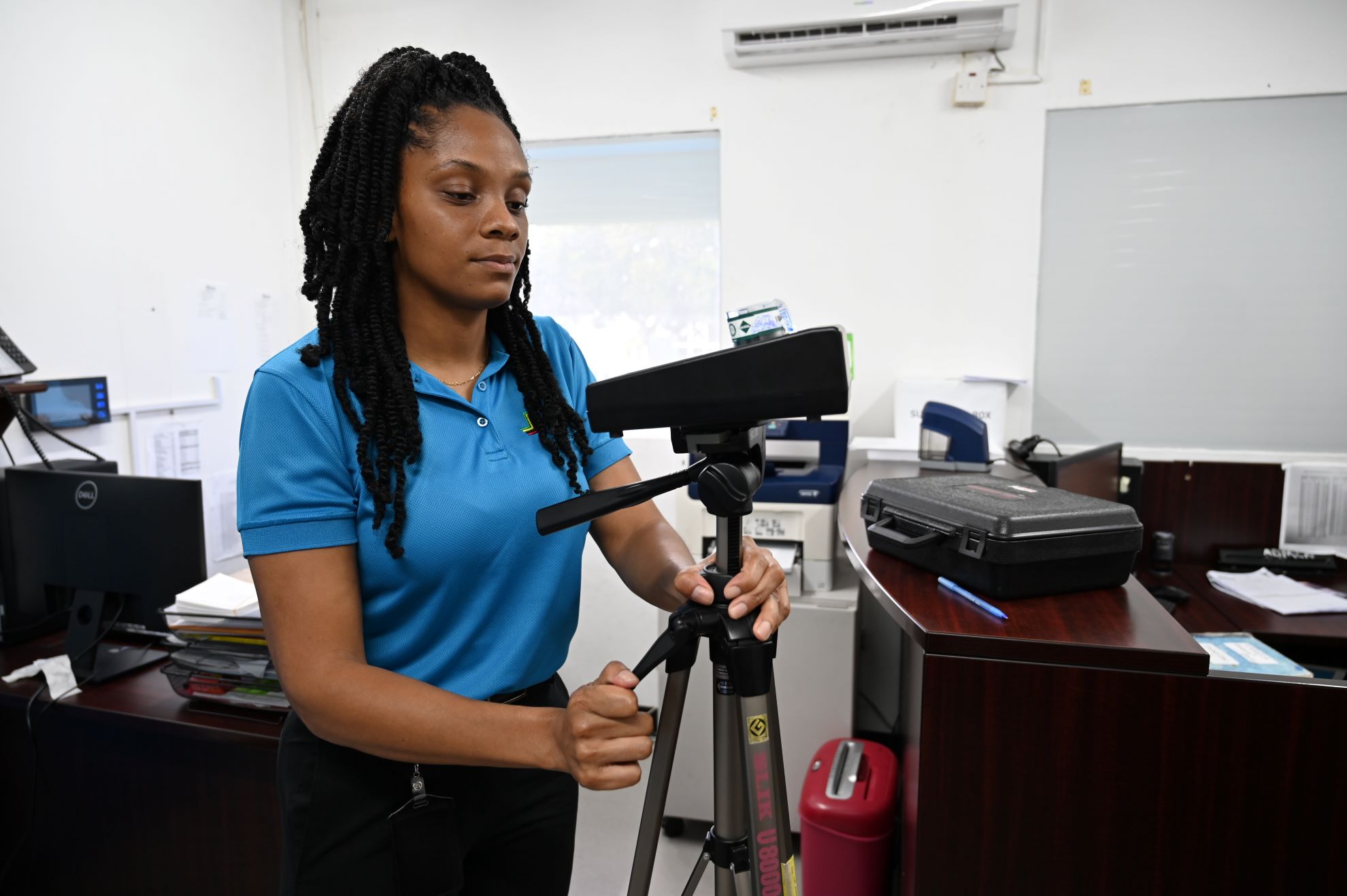
Air Samples: Air-O-Cell Filter Membranes (Spore Traps)
Commercially available sampling devices known as spore traps are used to capture airborne particles, including spores, on adhesive slides. These devices function by drawing air through them with the assistance of a vacuum pump, causing spores and other airborne particles to adhere to the collection adhesive. However, it’s important to recognize that spore trap collection methods come with inherent limitations. These methods tend to favour the collection of larger spores.
The analysis of total spore counts is conducted through direct microscopic examination, without the need for culturing or growing the fungi. Consequently, the results encompass both viable and non-viable spores.
To identify and categorise fungal spores, morphological characteristics such as colour, shape, septation, ornamentation, and the presence of fruiting structures (if any) are observed. These characteristics are then compared to established mycological identification keys and reference texts. The resulting report provides spore counts per cubic meter of air rounded to three significant figures. It’s worth noting that each spore category is reported with the same level of precision. Due to rounding and the use of three significant figures, the sum of individual spore numbers may not necessarily match the total spore count presented in the report.
Samples for Mold identification underwent testing through Direct Microscopy Examination.
INTERPRETATION OF AIR TEST RESULTS
One widely accepted method for evaluating indoor air quality and its impact on building occupants involves the analysis of indoor air samples. Typically, portable vacuum pumps calibrated to draw a specific volume of air per minute are employed to obtain these air samples. The air drawn into the pump is then captured in a specialized cassette containing an adhesive slide. This slide collects various airborne particles, including fungal spores, insect fragments, skin particles, and other particulate matter. Subsequently, the adhesive slide is subjected to microscopic analysis.
The advantage of this approach is the relatively quick turnaround time for results, as it does not necessitate the cultivation or growth of fungal spores. However, certain Mold types produce spores that closely resemble each other, making visual differentiation challenging. Consequently, these spores are grouped together, as seen with Aspergillus/Penicillium. Additionally, some spore types lack distinctive characteristics and are categorized within larger groups, such as Ascospores and Basidiospores.
When assessing indoor air quality, it’s customary to not only analyse indoor air samples but also compare the results to the levels of fungi and other airborne substances in an outdoor baseline air sample. Typically, indoor spore counts should be lower than outdoor levels. Nevertheless, lower indoor spore counts alone do not necessarily guarantee acceptable indoor air quality. Elevated counts of specific spore types or a higher total spore count indoors may indicate the presence of Mold growth inside buildings. The suspicion of indoor Mold growth becomes more substantial if the air sample identifies Mold spore structures known as hyphae.
It’s important to consider various factors when comparing outdoor baseline spore counts to indoor spore counts. Outdoor aerobiology is subject to fluctuations due to changing weather conditions. For instance, spore counts tend to be low in outdoor samples during the winter season. Rainy weather can wash away or reduce spore counts on outdoor surfaces, leading to lower air sample counts. Conversely, warmer weather causes Mold spores to become airborne due to evaporation.
Furthermore, outdoor air has less influence on indoor air quality nowadays due to more airtight and energy-efficient buildings, as well as the practice of keeping windows closed and relying on indoor air conditioning. As a result, the presence of Mold species, like Stachybotrys and Chaetomium, in indoor samples, even in small quantities, indicates a significant indoor Mold issue because these Mold types are typically absent in outdoor samples.
INDOOR AIR MOULD STANDARDS
Currently, there are no official Mold standards applicable universally. However, Mold guidelines do exist and can vary depending on the geographical region. Acceptable levels for individual Mold species can vary widely because different species exhibit varying levels of toxicity, spore size, weight, and other characteristics that impact the risk to building occupants.
Various public agencies provide publications related to Mold and indoor air quality for the benefit of the public. For instance, in a study conducted in “clean” residential buildings, the mean count for Aspergillus/Penicillium was 230 spores per cubic meter (m³) of air. In buildings with known moisture or flooding issues, the count for Aspergillus/Penicillium was significantly higher, at 2235 spores/m³. In Mold-contaminated buildings, the count for Aspergillus/Penicillium skyrocketed to 36,037 spores/m³. These variations demonstrate how spore counts can differ based on the specific circumstances and conditions within the building.
Experts have identified that a count of 48 Stachybotrys or Chaetomium spores/m³ of air is unusually high, as these Molds are typically not airborne. Conversely, a count of 200 Aspergillus sp. spores/m³ of air under the same conditions might be considered very clean. These comparisons highlight the importance of considering the context and specific Mold species when assessing indoor air quality and Mold contamination in buildings.
Understanding the Results
Mold, or fungi, spores are ubiquitous, found almost everywhere, both indoors and outdoors. There are over 100,000 known species of Mold. These microorganisms play a crucial role in breaking down organic matter. Mold can grow on a variety of surfaces, including wood, paper, carpet, food, and insulation. It thrives in environments with moisture or dampness, such as bathrooms and basements. Mold reproduces by producing tiny airborne seeds called “spores,” which can float in the air like dust particles. These spores are naturally present in the air and can attach to damp surfaces, where they can initiate growth. While these spores are microscopic and not visible to the naked eye, they can be inhaled. In some individuals, inhaling Mold spores can lead to allergy and asthma symptoms or cold-like symptoms like coughing and sniffling.
There is no universally established standard for what constitutes a ‘safe’ level of Mold or its potential health effects because individual responses to Mold exposure vary. However, there is general consensus that if you can see or smell Mold, it should be addressed and removed.
Mold growth occurs when excess moisture accumulates on buildings or within building materials, particularly when the moisture issue goes unnoticed or unaddressed. It’s important to note that it’s impossible to completely eliminate all Mold and Mold spores from the indoor environment. The development of symptoms related to Mold exposure depends on factors such as the types of Molds present (infectious, allergic, or toxic), the level of exposure, and the vulnerability of individuals exposed to Mold.
Mould Remediation Expertise
Examples of such expertise would be engineers, Health officers, building contractors and Mould removal and cleaning service providers. The remediation is not limited to but must include the following:
- Mould remediation
- Identify and remedy all leaks and sources of moisture.
- Servicing of air conditioners (including spraying with anti-mould solution) – Quarterly;
- Indoor air quality monitoring
- Regular cleaning of premises
Glossary of Fungi
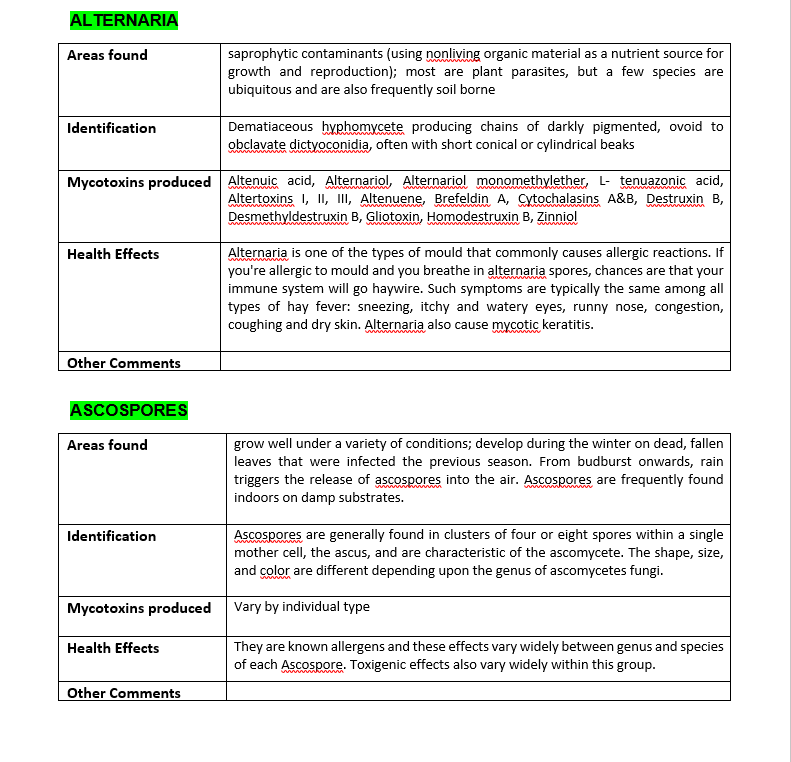
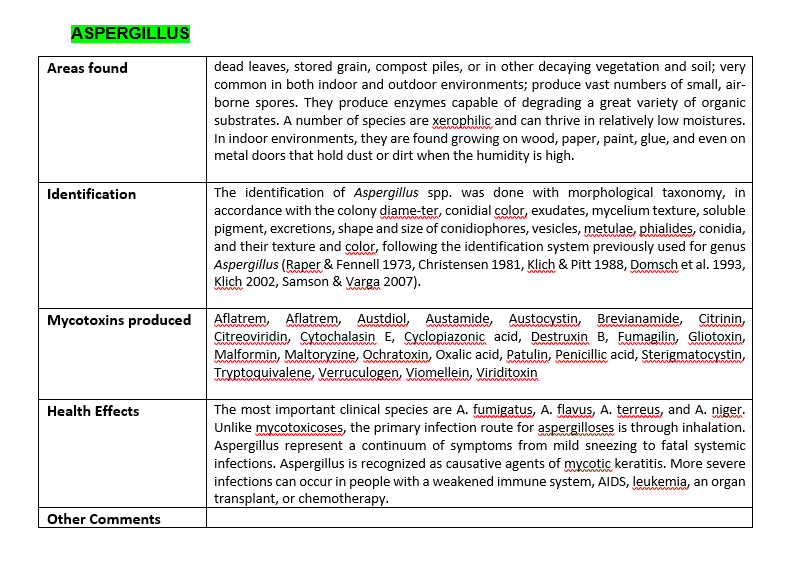
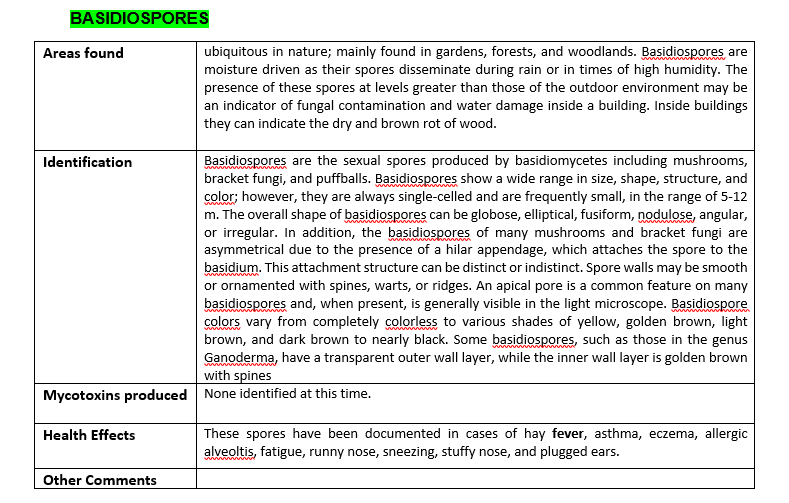
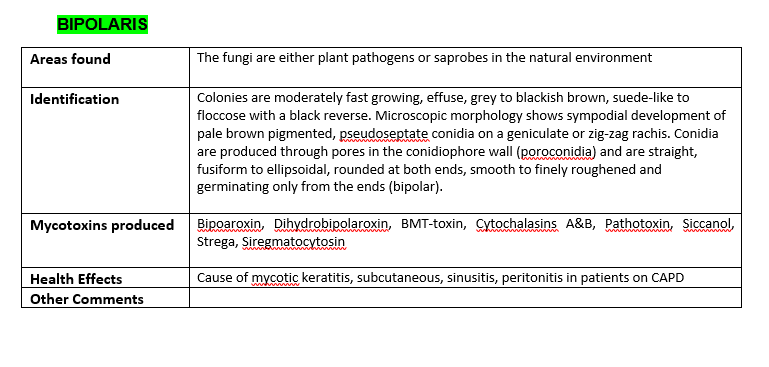
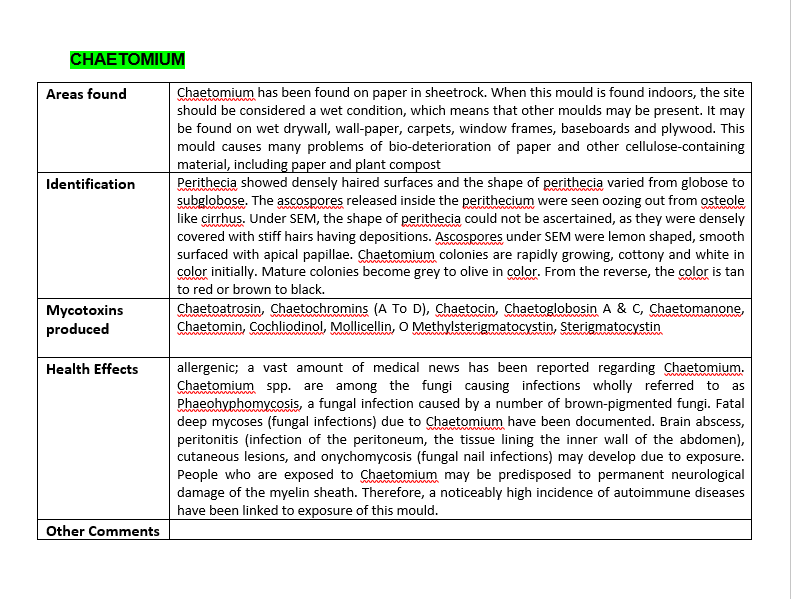
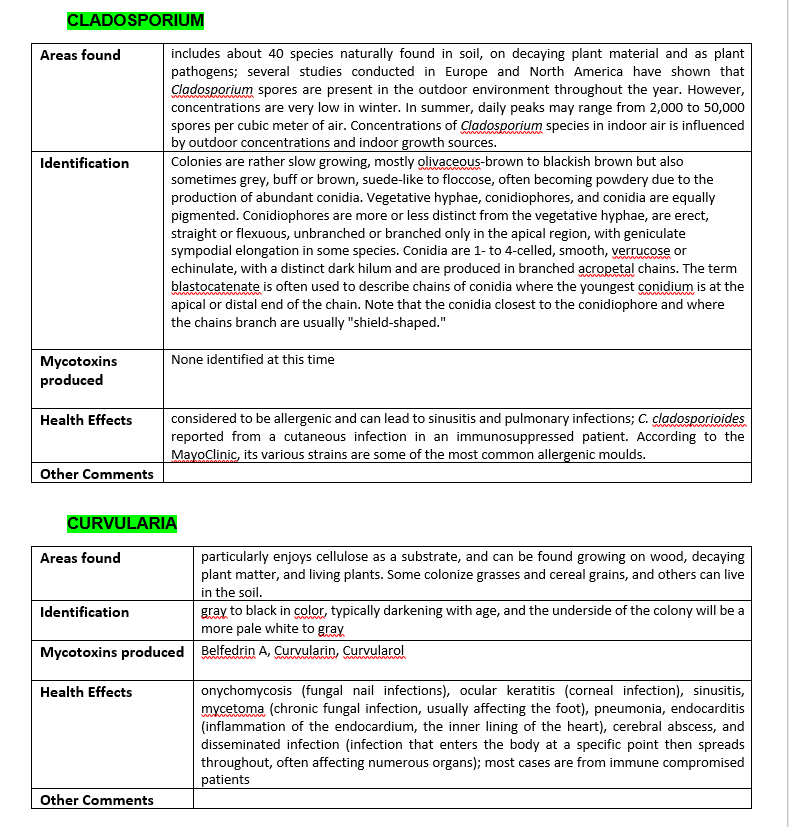
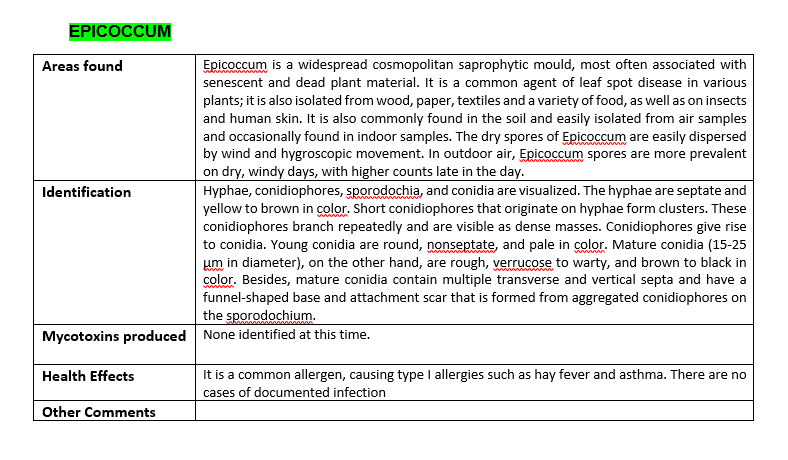
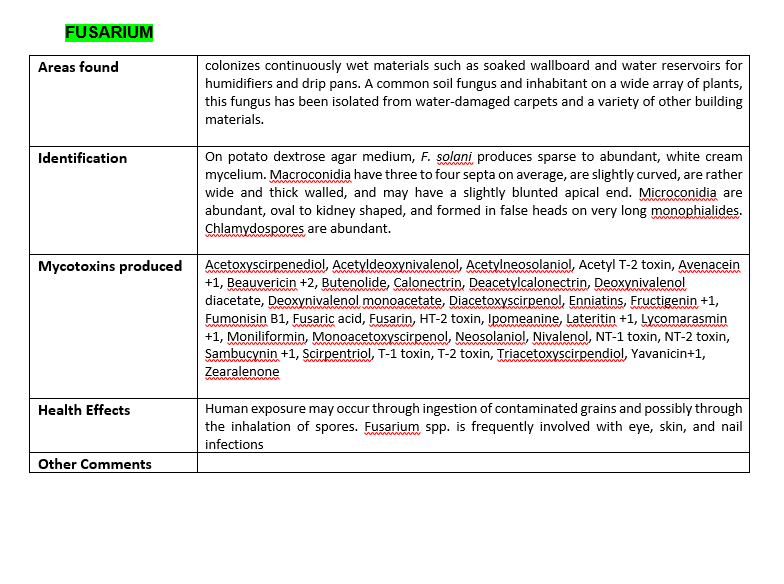
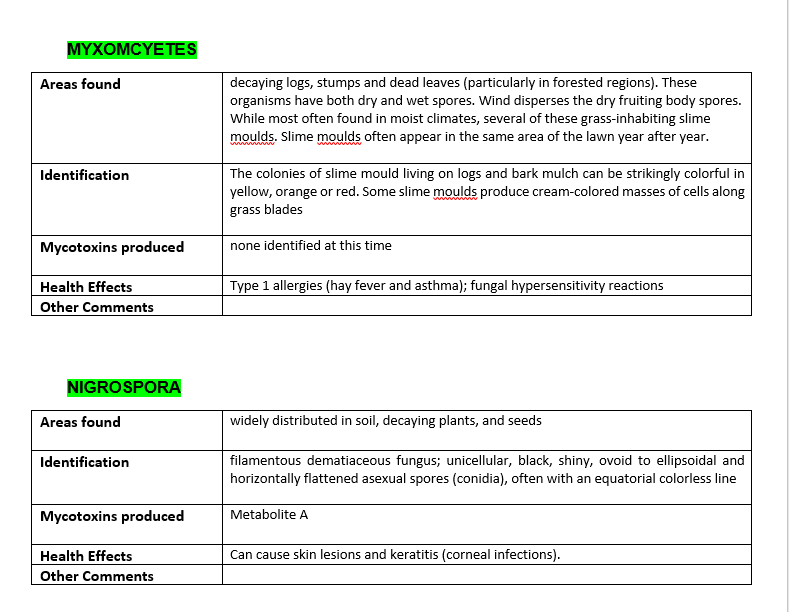
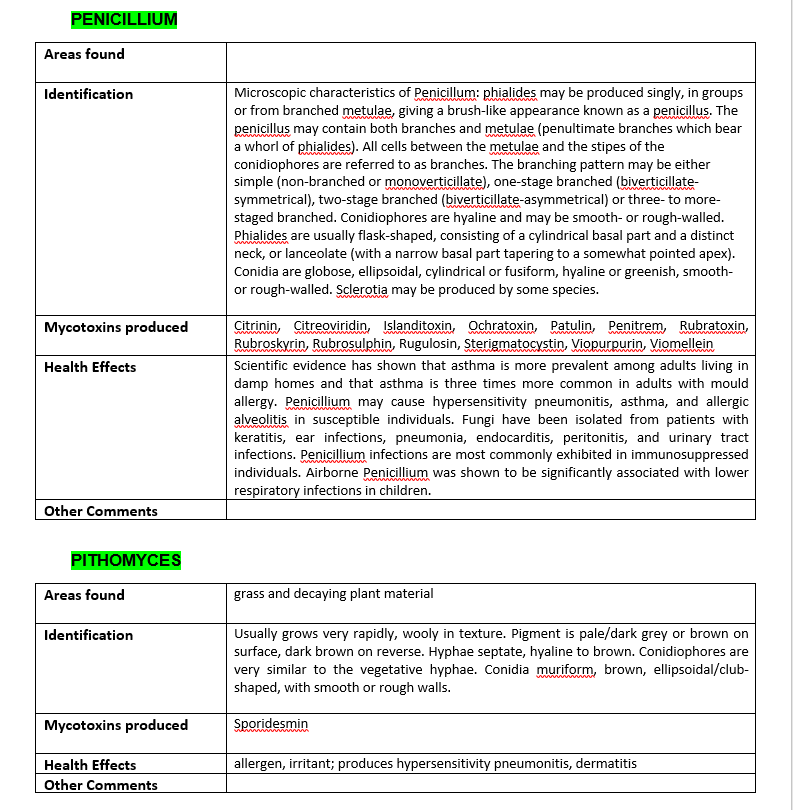
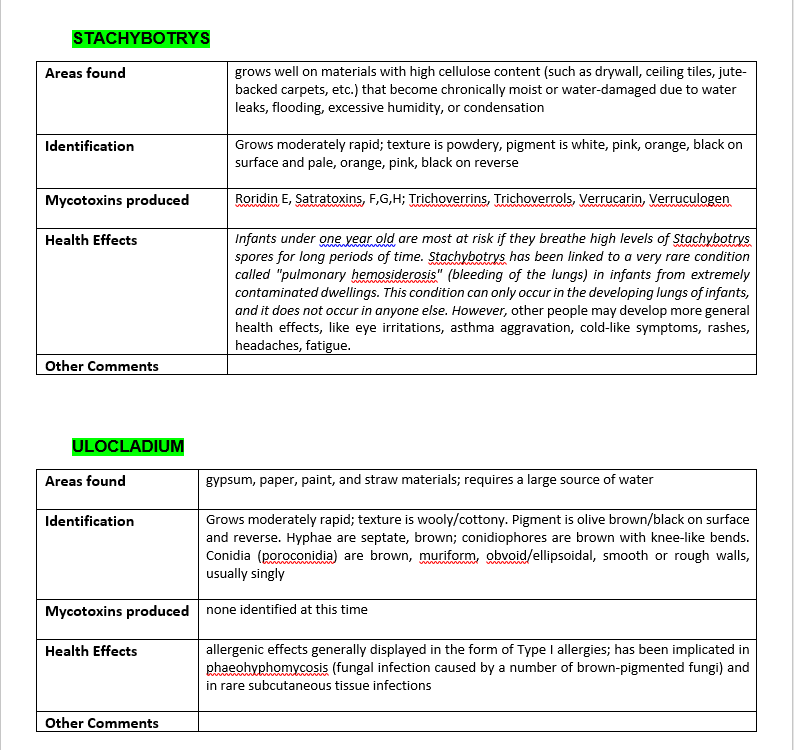
References
Agalloco, James P., and Frederick J. Carleton. 2007. Validation of Pharmaceutical Processes. Florida: CRC Press.
Knöppel, Helmut, and Peder Wolkoff. 2013. Chemical, Microbiological, Health and Comfort Aspects of Indoor Air Quality – State of the Art in SBS. Dordrecht: Springer Science and Business Media.
Kokakre, Chandrakant R. 2008. Pharmaceutical Microbiology Principles and Applications. India: Nirali Prakashan.
Kowalski, Wladyslaw. 2011. Hospital Airborne Infection Control. Florida: CRC Press.
New York City Department of Health, Bureau of Environmental and Occupational Disease Epidemiology. 2000. Guidelines on assessment and remediation of fungi in indoor environments. New York, NY: New York City Department of Health.
World Health Organization (WHO) 2009: Guidelines for Indoor air quality: Dampness and mould. WHO ISBN 798 92 890 41683, 2009
Web Links
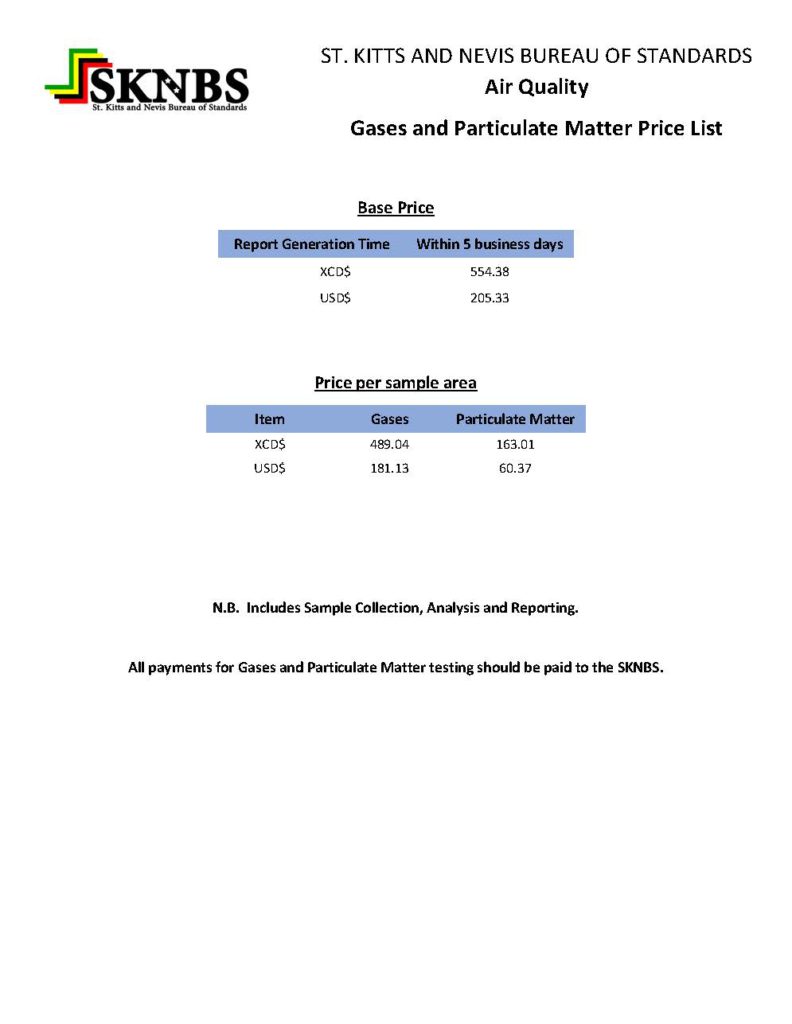
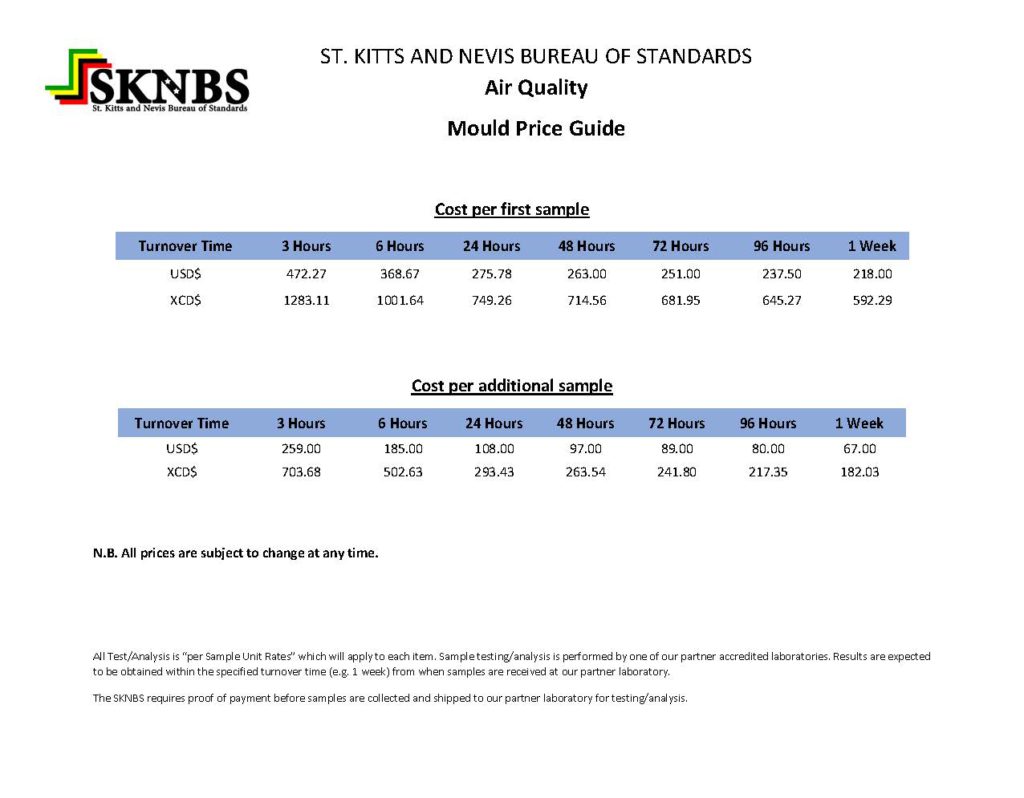
LEGAL DISCLAIMER
This website has been produced with the financial assistance of the European Union. Its contents are the sole responsibility of the St. Kitts and Nevis Bureau of Standards and can under no circumstances be regarded as reflecting the position of the European Union.

Ministry of Trade
The SKNBS is a department under the Ministry of Trade.
Website: https://www.miticca.gov.kn/
Phone Number: 1 (869) 467-1069
Email Address: foreigntrade@gov.kn
